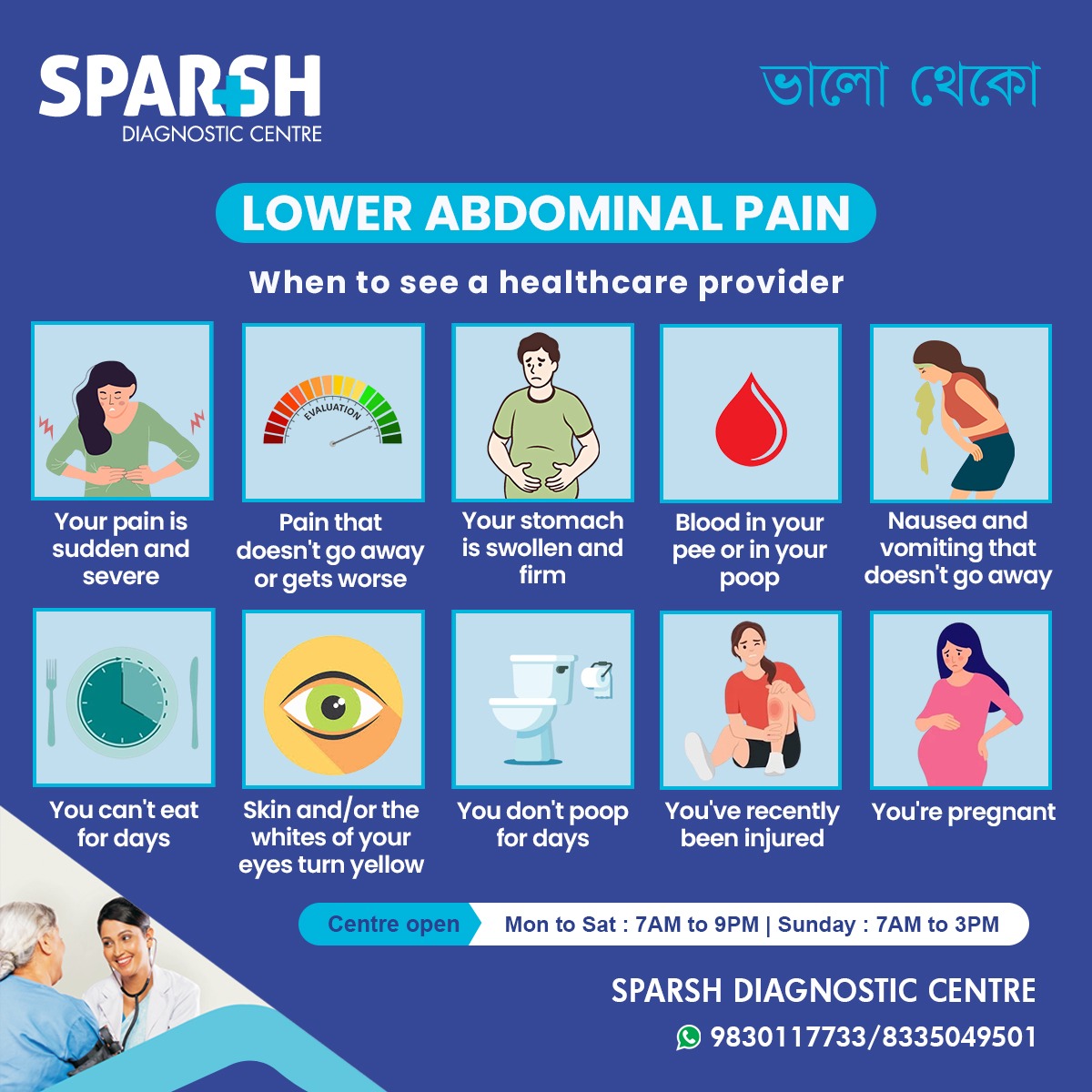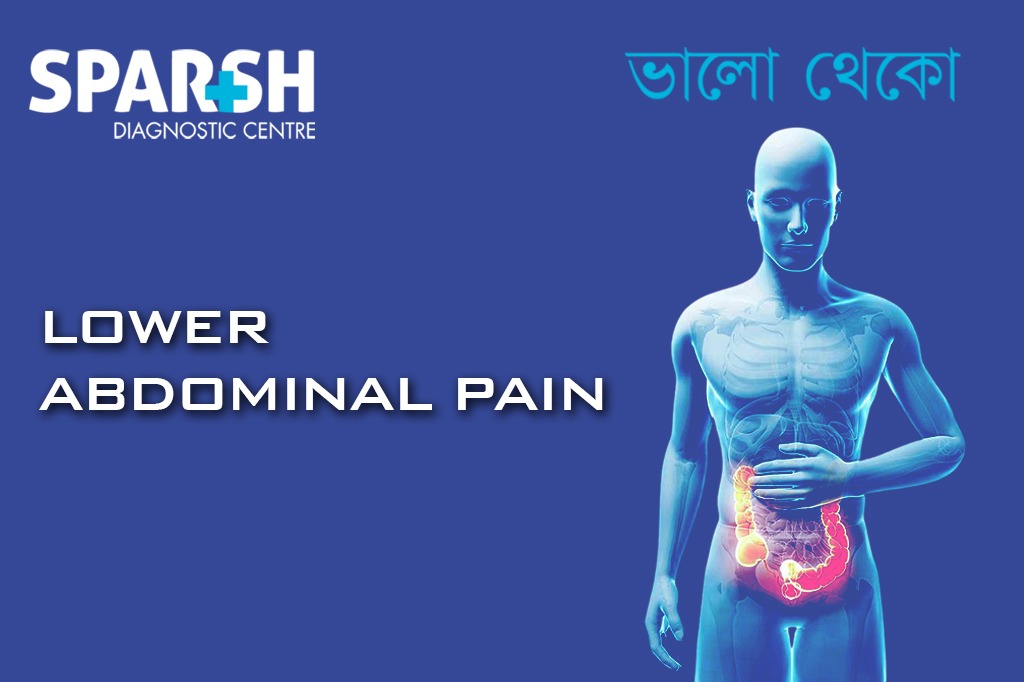Lower abdominal pain is one of the most common complaints among patients, and its causes range from mild digestive upset to serious medical emergencies. Understanding the nature of your pain and knowing when to seek medical help can prevent complications and improve outcomes.
In this blog, we will explore the common causes of lower abdominal pain, warning signs that require urgent attention, diagnostic approaches, and treatment options. If you’re unsure whether your pain warrants a visit to the doctor, this guide will help you make an informed decision.
Understanding Lower Abdominal Pain
The lower abdomen is the area below your belly button, encompassing parts of your digestive system, urinary tract, and, in women, reproductive organs. Pain in this region can be dull, sharp, cramping, or constant, and it may come on suddenly or develop gradually.
Common Characteristics:
Location: Right lower, left lower, or central
Onset: Sudden or gradual
Duration: Short-term (acute) or long-term (chronic)
Severity: Mild to debilitating
Associated symptoms: Nausea, vomiting, bloating, fever, bleeding, and changes in bowel habits
Common Causes of Lower Abdominal Pain
1. Digestive Causes
Irritable Bowel Syndrome (IBS): Cramping, bloating, gas, and changes in bowel movements
Constipation: Pain due to hard stool buildup
Gastroenteritis: Inflammation from infections, often with diarrhea and vomiting
Appendicitis: Sudden sharp pain in the right lower abdomen; medical emergency
Diverticulitis: Inflamed pouches in the colon; typically causes left-sided pain
Gas or bloating: Temporary discomfort often related to diet or food intolerances
2. Urinary Causes
Urinary Tract Infection (UTI): Burning sensation, frequent urination, lower abdominal pain
Kidney stones: Severe, sharp pain radiating to the groin or back
Bladder infection or interstitial cystitis: Chronic pelvic pain, urgency, and frequency
3. Reproductive Causes (in women)
Menstrual cramps (Dysmenorrhea): Lower pelvic cramping before/during periods
Ovarian cysts: Sudden pain if ruptured or twisted
Endometriosis: Chronic pain associated with menstruation
Pelvic Inflammatory Disease (PID): Infection causing pain and fever
Ectopic pregnancy: Medical emergency if pregnancy occurs outside the uterus
Pregnancy-related pain: Due to uterus stretching, ligament strain, or complications
4. Musculoskeletal Causes
Muscle strain: Common after exercise or lifting
Hernias: Weakness in the abdominal wall; may cause bulge and pain
5. Other Causes
Injuries or trauma
Post-surgical pain
Nerve-related issues
When to See a Healthcare Provider
While many cases of abdominal pain resolve on their own, some situations call for immediate medical attention. According to the Sparsh Diagnostic Centre infographic, you should see a doctor if you experience any of the following:
1. Sudden and Severe Pain
Sharp, intense pain that appears suddenly could indicate serious conditions like:
Appendicitis
Ovarian torsion
Kidney stones
Bowel obstruction
2. Pain That Doesn’t Go Away or Worsens
Persistent or worsening pain suggests a chronic issue or progressive illness such as:
IBS
Endometriosis
Pelvic infection
3. A Swollen and Firm Stomach
Abdominal distension and firmness may be due to:
Bowel blockage
Internal bleeding
Inflammatory conditions
4. Blood in Urine or Stool
This can be a sign of:
Urinary tract infection
Kidney stones
5. Nausea and Vomiting That Doesn’t Stop
Uncontrolled vomiting can lead to:
Signals serious infections or obstructions
6. Inability to Eat for Days
Loss of appetite with pain could indicate:
Liver disease
Stomach or intestinal disorders
7. Yellowing of the Skin or Eyes (Jaundice)
Usually linked with:
8. No Bowel Movements for Days
Constipation that lasts several days may indicate:
Intestinal blockage
Severe dehydration
Neurological conditions
9. Recent Injury to the Abdomen
Blunt trauma or a fall can cause:
Internal bleeding
Organ damage
10. Pregnancy
Pain during pregnancy should never be ignored as it could signify:
Ectopic pregnancy

Diagnostic Tests for Lower Abdominal Pain
Doctors may recommend several tests to pinpoint the cause of your symptoms:
1. Blood Tests
Inflammatory markers (CRP, ESR)
2. Urine Tests
Urinalysis for infection, blood, or ketones
3. Stool Analysis
Detect infections, blood, or parasites
4. Imaging Studies
Ultrasound (abdominal or transvaginal)
CT scan (to detect appendicitis, stones, tumors)
X-ray (for bowel obstruction)
5. Endoscopy/Colonoscopy
For visualizing the stomach or colon lining
6. Pregnancy Test
Especially if symptoms include missed periods or vaginal bleeding
Treatment Options
The treatment depends entirely on the cause of the pain. Below are common options:
1. Medications
Pain relievers: Paracetamol, antispasmodics
Antibiotics: For infections
Laxatives or stool softeners: For constipation
Antacids or PPIs: For acidity or ulcers
Hormonal treatment: For endometriosis or menstrual pain
2. Lifestyle Changes
Regular hydration
Exercise to prevent bloating or constipation
Avoid trigger foods (dairy, spicy items, etc.)
3. Surgical Treatment
Appendectomy
Hernia repair
Removal of ovarian cysts
Gallbladder removal (cholecystectomy)
4. Pregnancy-Specific Care
Bed rest, progesterone supplements
Emergency care for ectopic pregnancy
Close monitoring by an obstetrician
Prevention Tips
While not all abdominal pain is preventable, certain steps can reduce your risk:
Eat a balanced diet with plenty of fiber
Stay hydrated
Avoid overeating or skipping meals
Practice safe sex to prevent infections
Don’t ignore recurrent pain — seek medical advice
Maintain regular health check-ups, especially if you have chronic conditions
Why Choose Sparsh Diagnostic Centre
At Sparsh Diagnostic Centre, we understand how distressing abdominal pain can be. Our state-of-the-art facility offers:
Advanced ultrasound and imaging services
Skilled and experienced radiologists
Blood, urine, and stool testing
Gastrointestinal and gynecological screenings
Home sample collection across Kolkata
Same-day appointments and fast reporting
We’re open Monday to Saturday from 7 AM to 9 PM and Sunday from 7 AM to 3 PM, ensuring flexibility for working professionals and families.
📞 For appointments, call or WhatsApp: 9830117733 / 8335049501
Lower abdominal pain can be mild and self-limiting, or it can indicate a more serious health condition. It’s important to listen to your body and pay attention to warning signs like severe pain, bloating, vomiting, or changes in bowel habits.
Don’t wait for the pain to become unbearable — early diagnosis can make all the difference. Trust the experts at Sparsh Diagnostic Centre to guide you toward the right tests and treatment.
#BhaloTheko
Disclaimer:
No content on this site, regardless of date, should ever be used as a substitute for direct medical advice from your doctor or other qualified clinician.

![]()






[…] 1) Lower Abdominal Pain […]
[…] Discomfort – Pain or pressure in the lower abdomen or pelvic […]
[…] Lower abdominal or pelvic pain: Infections that spread to the uterus or fallopian tubes can cause discomfort or pain in the lower abdomen. […]
[…] Lower abdominal or pelvic pressure […]
[…] Tract Infections (UTIs): Infections in the bladder or kidneys can cause lower abdominal pain, frequent urination, and burning […]
[…] Lower abdominal pain […]
[…] Pain and Cramping: Pain is often located in the lower abdomen but can occur anywhere along the digestive tract. It is usually due to inflammation, ulcers, and […]
[…] Lower abdominal or back pain […]